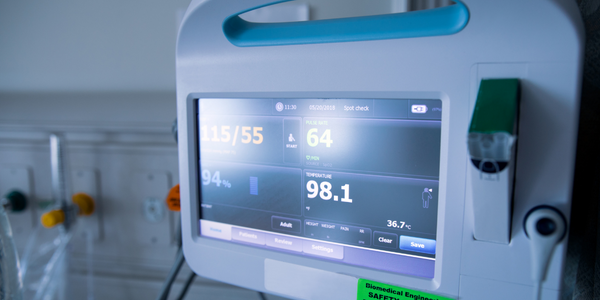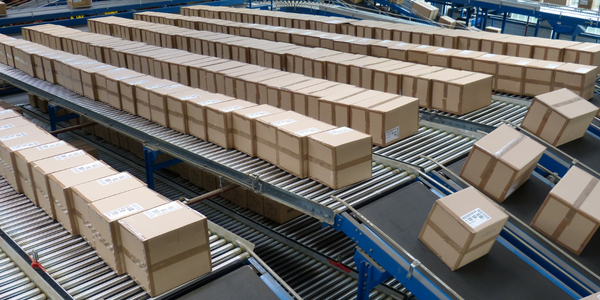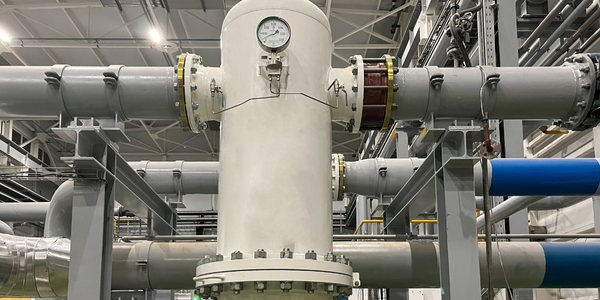
技术
- 分析与建模 - 机器学习
- 分析与建模 - 预测分析
- 自动化与控制 - 可编程逻辑控制器 (PLC)
- 功能应用 - 远程监控系统
- 传感器 - 加速度计
- 传感器 - 压力传感器
- 传感器 - 温度传感器
适用行业
- 包装
适用功能
- 维护
用例
- 预测性维护
客户
蒙迪格罗纳
关于客户
Mondi Grona 是国际领先的包装和纸制品制造商。该公司的塑料生产厂每年提供约 1800 万吨塑料和薄膜产品。该工厂的 900 名工人大约在
挑战
Mondi 工厂的挤压机和其他机器庞大而复杂,长达 50 米,高 15 米。每台机器最多由五个可编程逻辑控制器 (PLC) 控制,这些控制器记录机器传感器的温度、压力、速度和其他性能参数。每台机器每分钟记录 300–400 个参数值,每天生成 7 GB 的数据。
Mondi 在使用这些数据进行预测性维护方面面临着若干挑战。首先,工厂人员在统计分析和机器学习方面的经验有限。他们需要评估各种机器学习方法,以确定哪些方法为他们的数据产生了最准确的结果。他们还需要开发一个应用程序,将结果清晰而直接地呈现给机器操作员。最后,他们需要打包这个应用程序以便在生产环境中持续使用。
解决方案
使用 MATLAB 开发和部署使用机器学习算法预测机器故障的监控和预测性维护软件
收集的数据
Machine Performance
数量效益

Case Study missing?
Start adding your own!
Register with your work email and create a new case study profile for your business.
相关案例.

Case Study
IoT Data Analytics Case Study - Packaging Films Manufacturer
The company manufactures packaging films on made to order or configure to order basis. Every order has a different set of requirements from the product characteristics perspective and hence requires machine’s settings to be adjusted accordingly. If the film quality does not meet the required standards, the degraded quality impacts customer delivery causes customer dissatisfaction and results in lower margins. The biggest challenge was to identify the real root cause and devise a remedy for that.

Case Study
Zenon the Ideal Basis for An Ergonomic HMI
KHS develops and produces machines and equipment for filling and packaging in the drinks industry. Because drinks manufacturing, filling and packaging consist of a number of highly complex processes, the user-friendly and intuitive operation of equipment is increasingly gaining in significance. In order to design these processes as simple as possible for the user, KHS decided to introduce a uniform, transparent and standardized solution to the company. The HMI interface should meet the requirement for people with different qualifications and enable them to work on a standard platform.

Case Study
Sparks Dynamics Assists Atlas Container Secure a $15,000 BGE Energy Rebate
The ReMASTER Compressed Air Monitoring system was installed in 2015. This system is capable of monitoring compressed air system parameters on a continuous basis and transferring that information to a cloud server which can be accessed by Atlas Container personnel, Industrial Diagnostics and Sparks Dynamics. This information was collected into a database which can be exported to an Excel spreadsheet or displayed graphically using Sparks Dynamics ViewMaster Software. The average annual compressed air electricity expense was estimated to be approximately $116,000. This is based on an incremental $/KWh electric rate of $.091 per KWh and an estimated compressed air energy consumption of 1,279,200 KWH. The implementation phase of Energy Conservation Measures (ECMs) for the Compressed Air System included: • Identification and repair of compressed air leaks • Understanding of compressed air usage per manufacturing machine and installation of shut off valves when the machines are no longer in production mode • Identification of misapplications of compressed air to include blow offs, venturis, and cooling scenarios • Understand system pressure requirements and potential installation of point of use pressure regulation.

Case Study
Automated Pallet Labeling Solution for SPR Packaging
SPR Packaging, an American supplier of packaging solutions, was in search of an automated pallet labeling solution that could meet their immediate and future needs. They aimed to equip their lines with automatic printer applicators, but also required a solution that could interface with their accounting software. The challenge was to find a system that could read a 2D code on pallets at the stretch wrapper, track the pallet, and flag any pallets with unread barcodes for inspection. The pallets could be single or double stacked, and the system needed to be able to differentiate between the two. SPR Packaging sought a system integrator with extensive experience in advanced printing and tracking solutions to provide a complete traceability system.

Case Study
Industry 4.0 at ALPLA: Enhancing Factory Efficiency with IoT
ALPLA, a global leader in packaging solutions, faced several challenges as the complexity of their production machinery increased. The need for highly trained specialists in each factory led to higher personnel costs, difficulties in recruiting experienced talent at each location, and costly personnel turnover. Furthermore, less experienced operators running the machines sub-optimally impacted resource consumption and overall equipment effectiveness (OEE). ALPLA also faced the challenge of monitoring visual inspection systems in every line of their plants, which was almost impossible to do manually. In 2016, ALPLA decided to use data from the 900 different types of embedded sensors in each factory to address these issues. However, their initial choice of SQL Server as the data store for the sensor data proved inadequate, as it was unable to cope with their data requirements.

Case Study
Closer To Becoming world's Most Digitized Bottling Operation
While digitization is increasing efficiency and significantly growing customer engagement, it also comes with several challenges, not least being the growing risk of cyberattacks.This led the company’s Australian, Pacific and Indonesian operations (CCEP API) to create a three-year roadmap for developing and implementing enhanced security measures. A key element of the plan has been to improve existing privileged access management processes and gain heightened oversight and control over the use of elevated credentials.



